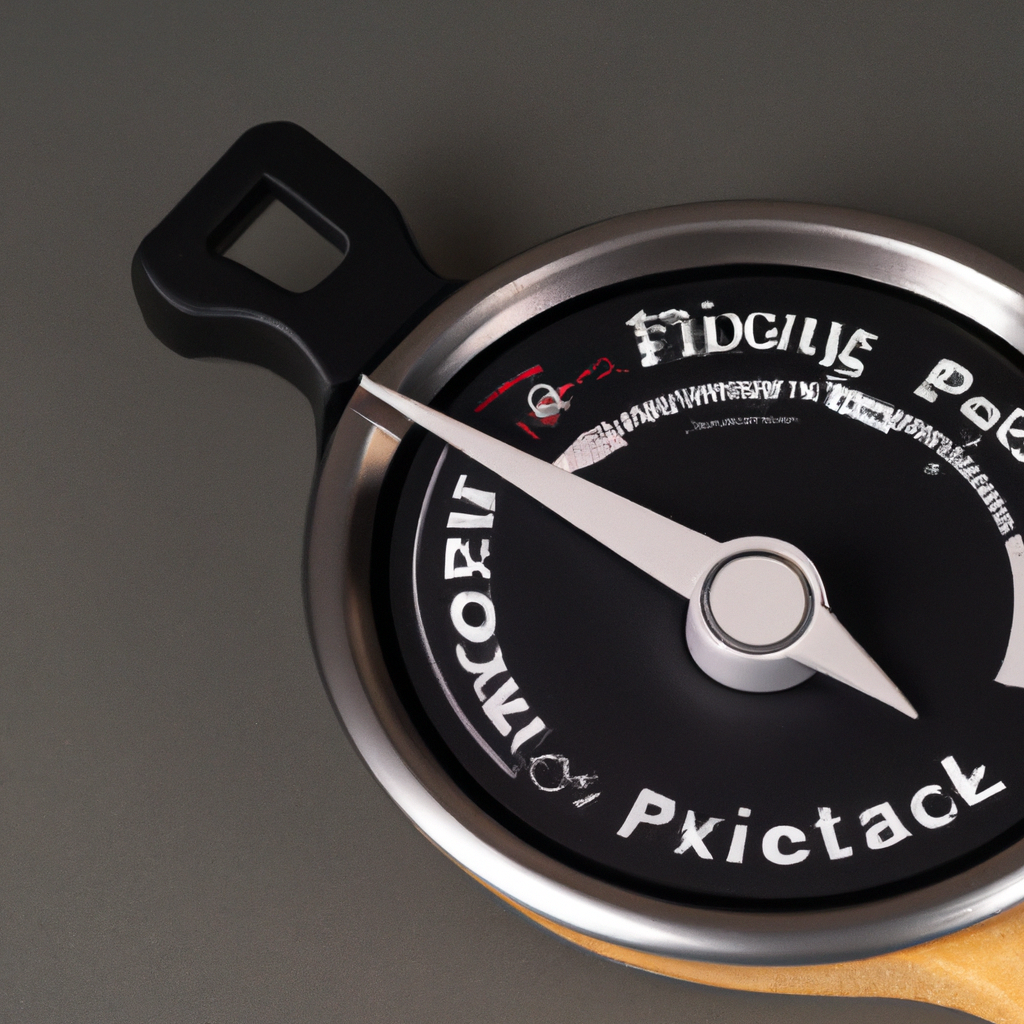In the whimsical world of cooking, where playful experiments and culinary adventures await, mishaps are bound to happen. More often than not, these unforeseen disasters occur when we least expect them – dough too sticky, sauces too salty, or dishes accidentally turned into charcoal sacrifices to the kitchen gods. Fear not, for we are here to reveal the untold secrets of speedy sorcery – the quick fixes that will save your bacon (and hopefully your dish!) in this captivating guide to vanquishing culinary chaos. So grab your aprons, slip on those oven mitts, and embark on a journey where culinary catastrophes meet their match in the most creative, yet neutral, solutions imaginable. Get ready to transform the chaos into kitchen magic like never before!
1. Salvaging Kitchen Disasters: Ingenious Quick Fixes for Common Cooking Mishaps
1. Overly Salted Soup: Oops! You got carried away with the salt shaker and now your soup tastes like the ocean. Don’t panic! Here’s how to save the day.
- Add a peeled raw potato: The potato will absorb some of the excess salt. Leave it in the soup for about 15 minutes, then remove it.
- Dilute with unsalted liquid: If possible, add more unsalted broth, water, or even a splash of milk to balance out the saltiness.
- Counteract the salt with acidity: A squeeze of lemon juice or a dash of vinegar can help cut through the overpowering saltiness and restore balance.
- Mask the flavor: If all else fails, add a touch of sweetness or creaminess to distract from the saltiness. A teaspoon of sugar or a splash of cream can work wonders.
2. Burnt Rice: Oh no, you left the pot on the stove for a minute too long, and now your rice is charred at the bottom! Don’t worry, salvage it with these easy tricks!
- Scrape gently: Use a non-stick spatula or spoon to scrape off the unburnt rice from the top layer, separating it from the charred bottom. Be careful not to mix in the burnt parts.
- Transfer to a new pot: Carefully transfer the unburnt rice to a clean pot, leaving the burnt layer behind. Add a little water if necessary.
- Mask the taste: If there’s still a burnt taste, add a teaspoon of butter or a few drops of oil to help neutralize the flavor. Alternatively, sprinkle some fresh herbs or spices to enhance the aroma.
3. Curdling Cream: Your attempt at making homemade whipped cream ended in disaster, and it curdled! Fear not, here’s how to fix it and turn it into a dreamy dessert topping.
- Cool it down: Place the curdled cream in the refrigerator for a few hours. Sometimes, low temperatures can help stabilize the mixture and bring it back together.
- Whip it again: Take the chilled cream out of the fridge and use an electric mixer to beat it until it regains its smooth texture. Start slowly and gradually increase the speed.
- Rework it with a secret ingredient: If whipping alone doesn’t work, add a spoonful of cold milk or a dollop of fresh, uncurdled cream to the mixture. This can often help emulsify and restore the cream’s original consistency.
4. Sticky Rice: Your attempt at making fluffy rice turned out sticky and clumpy. Don’t despair! With these tips, you can transform it into a delightful meal.
- Rinse and steam: Rinse the sticky rice under cold water to remove excess starch, then reheat it by steaming in a rice cooker or on the stovetop. This will help separate the grains and create a lighter texture.
- Add a little liquid: If the rice is still sticky, try mixing in a small amount of warm broth or even just hot water. Fluff it gently with a fork to distribute the moisture evenly.
- Sauté it: Turn your sticky rice into a delicious stir-fry by tossing it in a hot pan with a drizzle of oil and your favorite veggies and proteins. The heat and oil will help loosen the sticky texture and infuse it with lots of flavors.
2. From Flops to Flawless: Rescue Strategies for Common Culinary Catastrophes
Imagine this: you’re in the midst of preparing a delectable dish. Everything is going smoothly until disaster strikes! Don’t panic, dear culinary enthusiasts. We’ve got you covered with some life-saving rescue strategies for those common cooking mishaps that will turn your flops into flawless creations. Whether you’ve burnt your toast to a crisp or accidentally added too much salt to your soup, fear not! We’ve got the tips and tricks to save your culinary masterpiece.
1. Salvaging Overcooked Veggies:
Overcooked vegetables can be a real bummer, leaving them limp and lifeless. But worry not, for there’s a simple solution. Quickly transfer the overcooked veggies into a bowl of ice water to halt the cooking process. This will help them retain some of their crunchy texture. Once they are cooled, give them a quick sauté in hot oil and season with your favorite herbs and spices. Voila! Your once sad and soggy vegetables will now be transformed into a delightful addition to your meal.
2. Tackling Salty Surprises:
Oops, did you go overboard with the salt? Don’t fret! To fix an overly salty dish, you can balance it out with acidity and sweetness. Add a squeeze of lemon juice or a splash of vinegar to counteract the saltiness. Additionally, you can try adding a spoonful of sugar or a splash of honey to add a touch of sweetness that will help balance the flavors. Remember, a little goes a long way, so adjust the quantities gradually until you find the perfect taste.
3. Resurrecting Dry Desserts:
We’ve all experienced the disappointment of baking a dry cake or cookies. However, fear not, for there’s a trick to rescue these desiccated treats! Brushing them with a simple syrup made by dissolving sugar in warm water will inject some much-needed moisture. Another option is to serve the dry dessert with a sauce or accompaniment, such as a creamy custard or a scoop of ice cream. The combination of moisture and creaminess will elevate your dry dessert into a decadent delight.
Remember, culinary disasters happen to the best of us. Instead of throwing in the towel, embrace these rescue strategies to save your creations and turn your culinary flops into flawless masterpieces. With a dash of creativity and a sprinkle of resourcefulness, you’ll be able to conquer any kitchen catastrophe that comes your way!
3. Tackling Kitchen SNAFUs: Brilliant Quick Fixes for Everyday Cooking Mishaps
Kitchen mishaps are bound to happen, even to the most seasoned home chefs. But fear not, we’ve got you covered with some brilliant quick fixes to tackle those unexpected snafus. So, roll up your sleeves and let’s get cooking!
1. Burnt Food Rescues:
Oops, left your dish on the stove for a bit too long? Don’t despair! Try these quick fixes to salvage your burnt food:
- Scrape: Gently scrape off the burnt bits from the surface of the food. This should remove most of the charred flavor.
- Soak: If the burnt taste lingers, soak the food in milk or lemon juice for a few minutes. The acid in these liquids can neutralize the burnt flavor.
- Add Some Spice: To mask the burnt taste, try adding a dash of your favorite spices or herbs to your dish. The flavors will help distract from the mishap.
2. Reheating Tips:
We’ve all been there – reheating leftovers that end up soggy or dried out. But fret not, these tips will help you revive your leftovers with gusto:
- Moisture Magic: To avoid dried-out leftovers, sprinkle a bit of water or broth over your food before reheating. This will help retain moisture and keep it more flavorful.
- Crispy Rebirth: For reviving crispy foods like pizza or fries, pop them in the oven or on a non-stick skillet over medium heat. This will bring back their beloved crunch.
- Layer with Care: When reheating casseroles or pasta dishes, make sure to spread them out in an even layer. This ensures that every bite gets equally heated and prevents uneven reheating.
3. Emergency Substitutions:
Discovering you’re missing an ingredient halfway through a recipe can be a recipe for disaster. But fear not, these clever substitutions will come to the rescue:
- In a Jam: No jelly for your PB&J? Try substituting it with honey, agave syrup, or even mashed bananas. Experiment and find a combination that tickles your taste buds.
- Egg-cellent Alternatives: No eggs in the fridge? No problem! Use ingredients like applesauce, mashed avocado, or even silken tofu to add moisture and binding properties to your baked goods.
- Milk Makeover: If a recipe calls for milk but you’re dairy-free, reach for alternatives like almond, soy, or oat milk. They work remarkably well in most recipes and give a tasty twist to your dishes.
With these brilliant quick fixes up your sleeve, you’ll be well-equipped to tackle any kitchen snafu that comes your way. Remember, a mishap is just an opportunity for a creative workaround!
4. Mastering Kitchen Emergencies: Simple Solutions to Common Cooking Disasters
We’ve all been there – the smoke alarm blaring, the aroma of burnt food filling the air, and the sinking feeling that dinner just took a turn for the worse. But fear not, brave culinary explorers! In this section, we will equip you with simple yet genius solutions to rescue your cooking mishaps and transform them into triumphs. So put on your aprons and let’s dive right in!
Forgotten Salting: Rescuing a Tasteless Dish
Uh-oh! You’ve realized too late that your dish lacks flavor. Don’t panic – a few simple tricks can save the day. Try some of these quick fixes to add a burst of taste to your creation:
- Add a pinch of salt and stir well, tasting as you go.
- Squeeze a bit of lemon or lime juice to brighten the flavors.
- Dash in a splash of soy sauce or Worcestershire sauce for a savory kick.
- Sprinkle some herbs and spices, such as oregano or paprika, to enhance the overall taste.
Salvaging Overcooked Pasta: Time for a Rescue Mission
Oh no, your pasta is softer than a marshmallow! But don’t fret – all hope is not lost. Follow these tips to rescue your mushy noodles and create a delightful dish:
- Drain the overcooked pasta and rinse it under cold water to stop the cooking process.
- Reserve a cup of the pasta cooking water before draining, as it can be used to revive the texture.
- Toss the pasta with a drizzle of olive oil to soften the noodles slightly.
- Mix in some fresh vegetables, like cherry tomatoes or broccoli, to add texture and freshness.
Extinguishing Kitchen Fires: Staying Cool in Hot Situations
Fire in the kitchen? Stay calm and follow these steps to safely extinguish most common cooking fires:
- Turn off the heat source immediately.
- Use a metal lid to cover the flaming pan and smother the fire.
- If the fire is in the oven, keep the door closed and turn off the oven.
- Never use water to extinguish a grease fire; it can cause the fire to spread.
- Keep a fire extinguisher handy in the kitchen and familiarize yourself with its use.
In the world of cooking, accidents are bound to happen. With these ingenious tricks up your sleeve, you’ll be able to handle any kitchen emergency with finesse. Remember, resilience and creativity can turn even the most disastrous cooking situations into delicious successes. Stay brave, experiment, and never be afraid to improvise!
The great thing about cooking mishaps is that with a bit of knowledge and some ingenuity you can usually rescue your dish. With these quick fixes, you should be able to get your food back to its former glory – and learn how to avoid making the same mistakes twice. Bon appétit!



